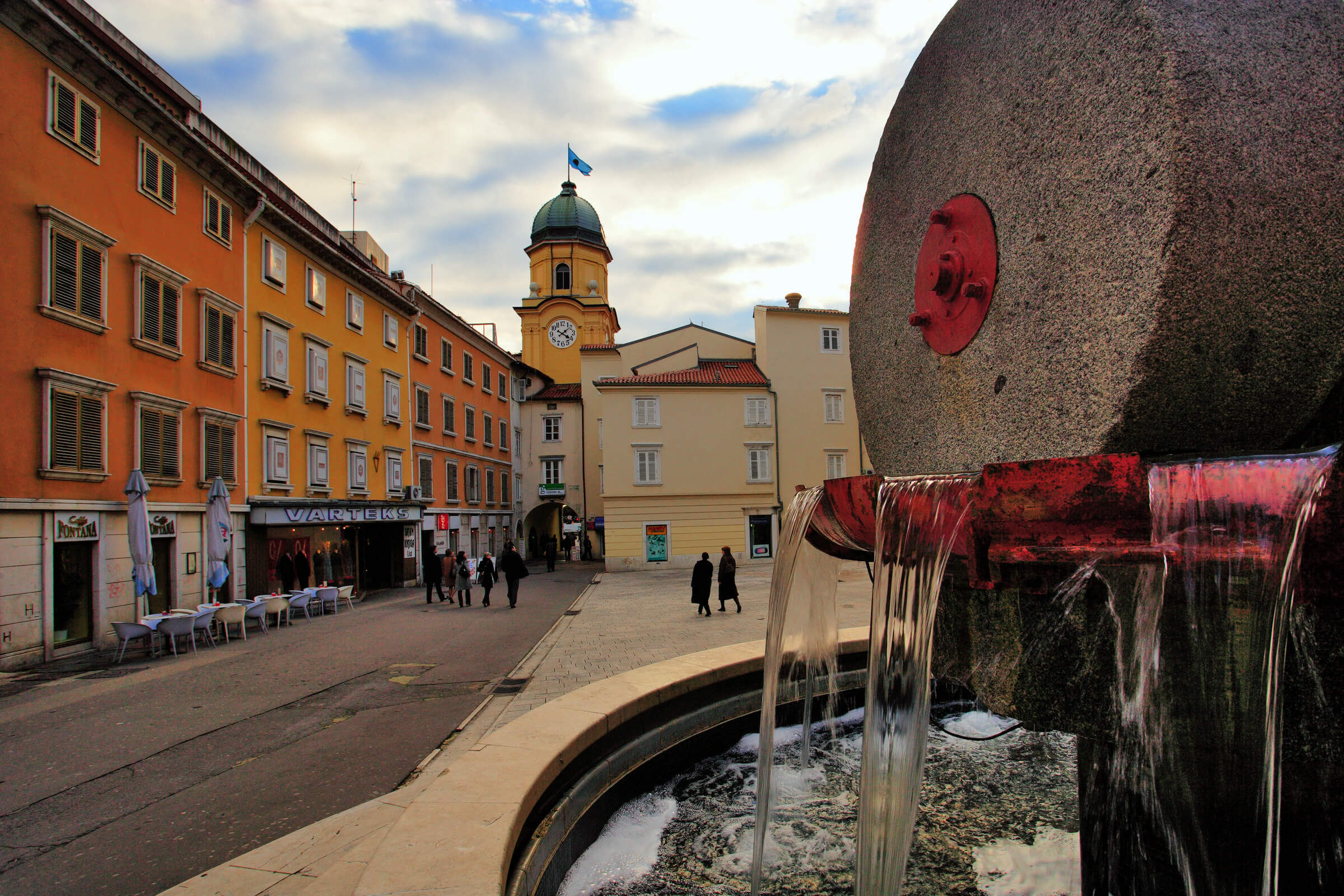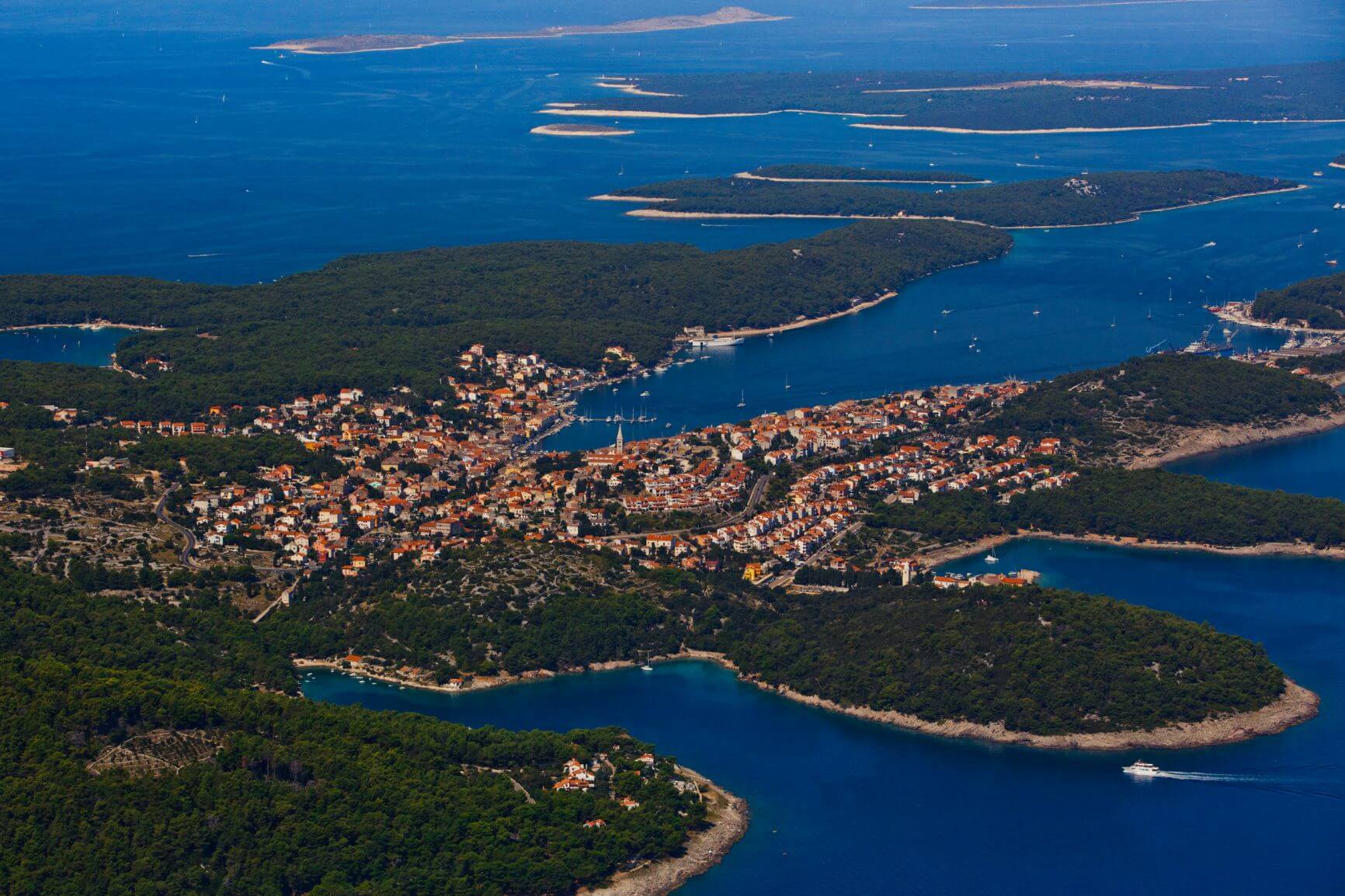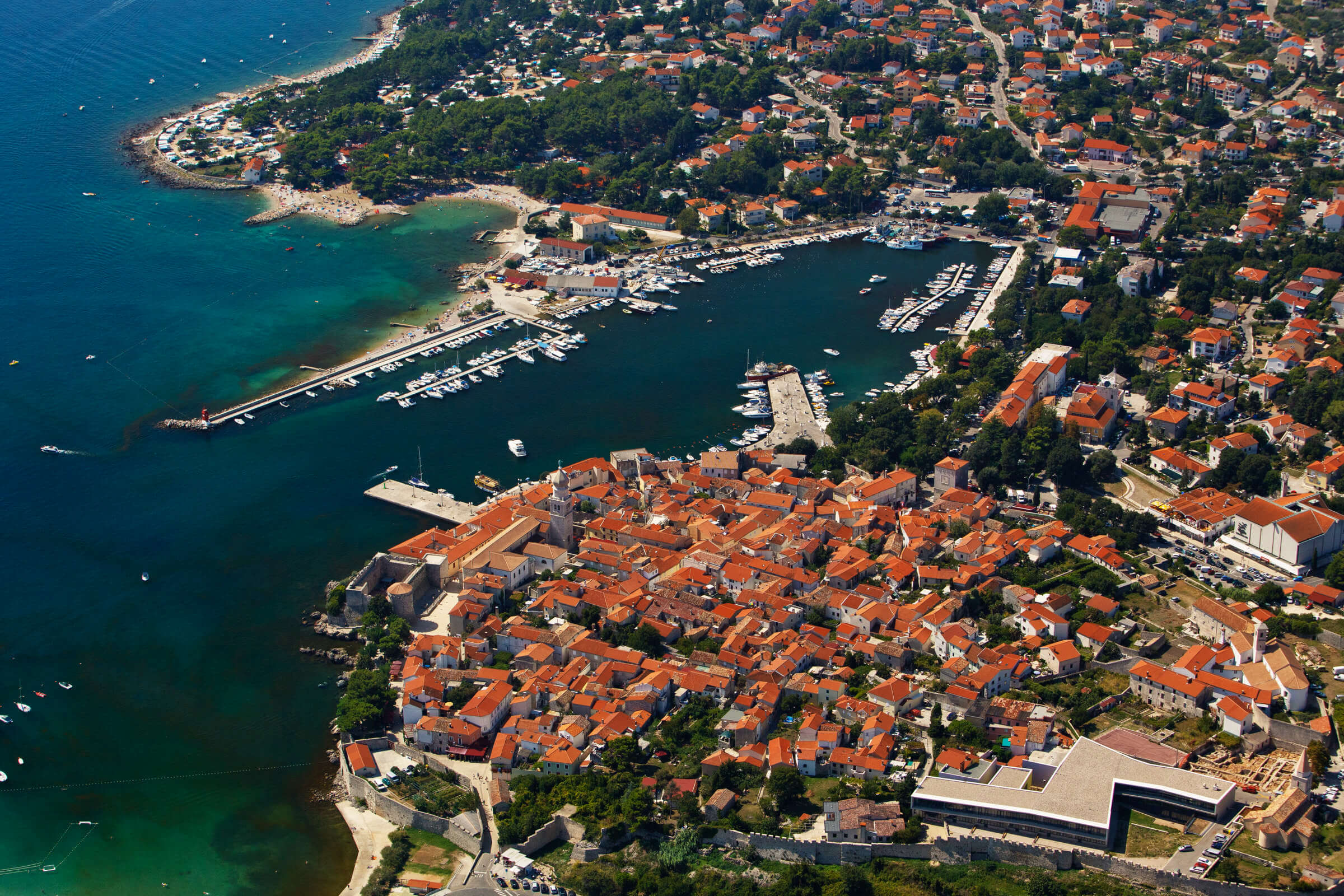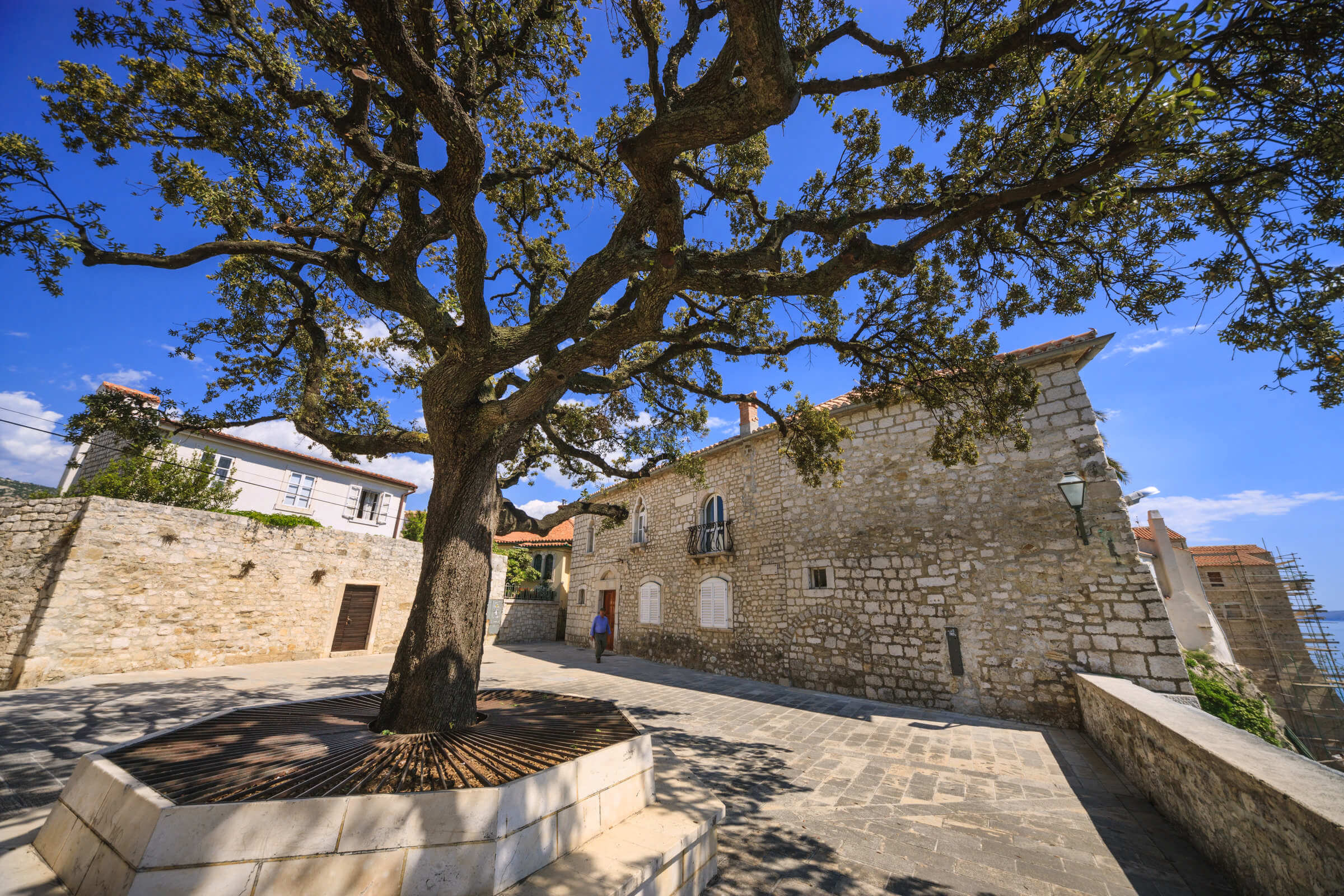How Can Croatia Handball Advance to EHF Euro 2022 Semifinals?
January 21, 2022 - Does Croatia handball have a chance at making the EHF Euro 2022 semifinals? Yes, but it won't be easy.
Because the Croatia men's handball team did not transfer any points to the next phase of the competition and lost to Montenegro 32:26 in the first game of the second round, their chances of reaching the European Handball Championship semifinals are slim. However, there is a glimmer of hope, reports T.portal.
So, how can Croatia move to the knockout stage of the competition?
1) The first condition is that Croatia can no longer lose and needs to win the next three games: Denmark (Saturday), Iceland (Monday), and the Netherlands (Wednesday). If they lose to Denmark, they have no shot.
2) The second condition comes down to the other results, of which the key one is for France to beat Denmark in the group derby. In that case, France would be first in the group with ten points, Croatia and Denmark would have six points each, and Montenegro and Iceland four points each.
3) In addition, some other results must coincide, so it is so important that Montenegro beats the Netherlands on Saturday, and France beats Iceland.
4) Furthermore, Denmark should be expected to win against the Netherlands and France against Montenegro. It is also important that Iceland outplays Montenegro.
Thus, Croatia does not depend on themselves, and needing to secure three consecutive victories, including against powerhouses Denmark and Iceland, is not totally realistic.
However, with so much at stake, coach Hrvoje Horvat decided to make several changes in the team in order to present the best possible players at the European Championship.
Against Denmark tomorrow, Kristian Pilipović will be part of the team, who today (January 21, 2022), acquired the right to play for Croatia, in addition to Lovro Mihić and Mateo Maraš.
"We go game by game, defeat hurts and we are not happy that we lost. We are in a specific situation where we need to constantly revise, always start all over again. It will be very difficult to play, we will need to be maximally concentrated and provide the best possible game," said Horvat.
Croatia and Denmark meet on Saturday at 20:30.
To read more about sport in Croatia, follow TCN’s dedicated page.
Exhibition of Croatian Beauties in Center of Budapest
June 29th, 2021 - The Croatian National Tourist Board in Hungary created a 20 photo exhibition of Croatian beauties, emphasizing UNESCO heritage at the popular Hunyadi Square in the center of Budapest.
HTZ reports, the exhibition is set as part of the first Festival of Nations in Hungary, organized in cooperation with the Croatian Embassy in Hungary and the Eötvös 10 Cultural Center in Budapest, and all residents and visitors to Budapest will be able to see the photos until July 10.
During the exhibition setting, the director of the CNTB Representation in Hungary, Ivana Herceg, pointed out that Croatia is an everyday topic in Hungary these days, primarily due to the summer vacation on the Adriatic. "With this exhibition, the emphasis is not only on the coast but also on the continental part of Croatia and the rich cultural and natural heritage that Croatia abounds in," added Herceg, inviting Hungarians to visit Croatia in all seasons.
At the exhibition's opening, the Ambassador of the Republic of Croatia to Hungary, Mladen Andrlić, and the Hungarian Parliament Lajos Oláh also addressed the audience. The entire program was enhanced by the folklore performance of students from the Croatian school and gymnasium in Budapest (HOŠIG). In contrast, in the evening, the Croatian film Comic sans directed by Nevi Marasović was shown at the open square.
CNTB Representation in Hungary last week held a presentation for members of the Hungarian Association of Travel Agencies (MUISZ). At the same time, a conference for Hungarian journalists will be organized tomorrow to present the latest rules on entering Croatia and returning to Hungary, current epidemiological measures in Croatia, new investments in Croatian tourism, airlines, the campaign "Trust me, I've been there," and the project "Safe Stay in Croatia" will be presented.
According to the eVisitor system, more than 51,000 arrivals and 215,000 overnight stays have been made from the Hungarian market in Croatia so far this year, increasing 107 percent in overnight stays compared to the same period last year.
For more on travel in Croatia, follow TCN's dedicated page.
Budapest, Innsbruck, Grenoble Mayors Support Tomislav Tomašević For Zagreb Mayor
ZAGREB, 12 May, 2021 - The mayors of Budapest, Innsbruck and Grenoble have sent video messages of support to Tomislav Tomašević, the green-left coalition's candidate for the mayor of Zagreb, the We Can! political platform said on Wednesday.
Budapest Mayor Gergely Karácsony says in his message that Zagreb and Budapest are not only geographically close but also friendly cities with many links, underlining how important it is for the progressive green agenda to strengthen its position in the region and to act together to achieve a viable, democratic future.
Karácsony says the policies Tomašević advocates, such as green public transport and recycling, are the key issues on which he is working as mayor too, and calls on the people of Zagreb to vote for Tomašević
Innsbruck Mayor Georg Willi says the challenge today is to find the right response to climate change and that green changes will primarily occur in European cities. That's why Zagreb needs strong advocates of those changes under Tomašević's leadership as mayor, Willi adds.
Grenoble Mayor Éric Piolle says he is looking forward to cooperating with Tomašević in the network of ecological cities flourishing across Europe, from Innsbruck and Amsterdam to Bonn and Hannover as well as many cities in France.
Piolle says Tomašević has been fighting for the environment for years, working on transparent policies and including citizens in shaping their city.
By electing Tomašević as mayor, Zagreb has a chance to join the increasing number of European cities governed by progressive green-left political forces which are making important steps forward in improving quality of life by taking account of climate change and other challenges of the 21st century, Piolle says in his video message.
For more about politics in Croatia, follow TCN's dedicated page.
Kvarner Bay - Where the Mediterranean Meets Vienna And Budapest
August 19, 2020 - If you thought that the entire Croatian coast is about easy-going life, with antique remnants and hot-blooded people who sing all the time under the olive oil tree - you haven’t seen Kvarner Gulf. Kvarner Gulf is also a Mediterranean region in the Adriatic sea and is somewhat similar to Dalmatia, but its culture is totally different. Think the Mediterranean with Austro-Hungarian moderation, diligence, and attention to details.
Kvarner Gulf is bordered by Tuscan-style Istria in the north, a petite arcadia of vineyards, lovely woods with truffles, pleasant coastal towns, beaches, and charming hamlets on the rolling hills. In the south, Kvarner Gulf borders Dalmatia, a region where natural beauties and amazing cultural heritage co-exist with architectural atrocities, traffic mess, and a dose of chaos here and there.
Between rustic Istria and hot-blooded Dalmatia, Kvarner lives its quaint, diligent, and neat life with tourism that was conceived in the glory days of the Austro-Hungarian Empire. In Dalmatia - there are ancient houses and entire towns made of stone and marble. In Kvarner, you will see narrow houses with colorful facades, villas from the belle epoque built as summer residences of a European aristocracy, and lovely houses of Kvarner’s captains with palms and exotic plants they brought from all over the world.
Dalmatia is pretty - for the most part. Yet, its turbulent history heavily influenced by the Ottoman Empire created a culture that sometimes misses keeping all things pretty, neat, and organized. This part of the Mediterranean inclines toward loud emotions that can slightly fog rational thinking, creating a charming dose of chaos and slothfulness (google: fjaka). And that’s why we love it.
Dalmatian chaos gave birth to amazing arts - klapa singing is beyond beautiful and the legendary Malo Misto TV series can stand side-by-side with Jirzi Menzel’s and Fellini’s depictions of small-town life.
But, if you want to experience another kind of Mediterranean - less dramatic and loud, visit Kvarner. The history of Kvarner was somewhat different than Dalmatian history - while Dalmatia was dealing with the attacks of the Ottoman empire, more civil rule of the Venice and Austria defined the largest part of Kvarner area, leaving good infrastructure and carefully tended gardens in front of the lovely houses lining the orderly streets of the neat colorful towns.
Colorful facades of Kvarner vs stone houses of Dalmatia
Opatija
The city of Opatija is pretty similar to Montreux - big fancy, belle epoque houses with lush gardens, parks, and promenades were built as summer residences of European aristocracy. Instead of the Geneva lake, there is an Adriatic sea and lots of palms, but the experience is quite alike. Fancy hotels and restaurants serve the high-class clientele that loves the buzz of luxury and style. Both boast nostalgic scenery of the Charleston age.
Photo by Romulic and Stojcic
Rijeka
Rijeka used to be a Habsburg and Hungarian port from the late 17th century, competing with Austria’s imperial port of Trieste.
And you know ports - they tend to be open-minded, mild-tempered, liberal and outgoing - especially if we are talking about Habsburg ports at the peak of the Empire’s power and ambition.
Rijeka’s historical buildings remind a bit of Vienna or Graz, and its heritage doesn’t have so much to do with the Romans, battles with Ottomans, fortifications, and towers like in Split, as with the industrial revolution, transportation made in the 19th century and the efforts of Austrian and Hungarian empires to spread their influence from Rijeka to the rest of the world.
When you compare the mindset of Rijeka and the big Dalmatian port of Split, you will notice a more conservative, right-wing way of thinking in Split and a more left, open-minded atmosphere in Rijeka. If you are a young woman looking to find a partner to support you in your career, you might want to look for a guy from Rijeka. And if you'd like to find a tall, dark, handsome and macho man, definitely head towards Split. But, don’t expect him to cook for you or do laundry. In Split, they take good care not to risk masculinity as it, as they believe, dissipates when in touch with kitchen utensils, the vacuum cleaner or laundry detergent.

Photo by Romulic and Stojcic
Lošinj Island
Lošinj is incredibly beautiful - and not only for its lovely nature and historic heritage from the 19th and 20th century - it is as neat and tidy as if some Swiss people come regularly to tidy it up. All the houses have colorful facades, neat gardens and clean streets - unlike Dalmatia, Lošinj and Kvarner love it orderly.
No saddening and confusing architectural atrocities that attack the idyllic Mediterranean towns and bays in Dalmatia. People of Lošinj protect its cultural and natural heritage by their architectural choices, keeping in mind that prosperous tourism is not about quantity, but foremost - quality.
A bit of smart strategic planning executed by top brand destination managers, based on a long tradition of Lošinj health tourism, and a bit of ratio driven thinking resulted in sustainable tourism that is equally attractive to inhabitants and tourists. Lošinj people find it a bit funny when their Dalmatian neighbours build a zillion clubs, attract all the partygoers of Europe and then whine because drunk, pissing and vomiting youth wander across amazingly nice Renaissance streets. I mean, duh?! What was the plan - open all those clubs and then organize baroque music festivals for the rich European aristocracy in them?
Lošinj is branded as an “Island of Vitality” - and this well-throughout tourism direction prevented mass and party-oriented tourism. It is that simple. Have a strategy, derive a plan from it and then stick to it as much as possible. No clubs, no club-goers. It's not quite rocket science, right?
High-end tourists are happy - they come to enjoy a great climate and recover in fancy wellness programs, truly untouched nature, top hotels and restaurants, and inhabitants are reasonably happy, since this type of tourism doesn’t interfere with the values and a tranquil lifestyle of inhabitants.
Of course, there are always people who are not happy with this or that, but they do not express their opinions by uncontrollable usage of concrete or undermining the overall developmental strategy - no Dalmatian-style “dišpet” (resistance with passionate attitude) here. A bit of nagging and some fine-developed art of gossiping, that’s all.
Is Lošinj an example of a series of fortunate events? I wouldn’t say so - it is about mindset, shaped by the Italian and Austrian influences that cooled the Mediterranean blood to more moderate temperatures and weeded out instant gratification of fjaka by offering some more sophisticated ways to be.

Photo by Romulic and Stojcic
Cres
Cres is something special - experts would say it is touristically underdeveloped, but that is exactly the reason to visit it. It has several tourist hubs (Martinščica, Cres, Punta Križa) - but the rest of it is beautifully left alone. It is an island of stunning hamlets with perfect beaches down the hill, dramatic cliffs and minimalistic type of Mediterranean vegetation - large areas are covered only by aromatic plants and a shrub here and there.
It is a place to enjoy meditative walks, soak up the beauty of the Adriatic looking at it from above and visit the villages that look like they did when your great-grandma first noticed your great grandfather.
Photo by Romulic and Stojcic
Krk
Is it still an island if it has a bridge? Maybe it is, maybe it isn’t, but thanks to the bridge, Krk is way more easily reachable and therefore a bit busier than Lošinj and Cres islands. Still, it is not crowded and besides historic towns with many restaurants and touristy buzzes, such as Krk or Malinska, it offers numerous quaint villages and secluded bays to rest and enjoy.
Here you can enjoy the best of tourism, some nice history, great food and lots of tranquility and untouched beauty.

Photo by Romulic and Stojcic
Rab
Rab is a beautiful and diverse island, one of those fairly well-developed tourist destinations, that have everything you dream about when you plan your vacation. There are long sandy beaches with many things to do, tasteful restaurants, great facilities, and fun event Rapska fjera that brings you back to Rab’s Middle Ages.
But, Rab is not a victim of overtourism, no chaotic crowds, or devastation of nature. Rab is a moderate and smart destination, just like the rest of the Kvarner. With long sandy beaches and deep shades of pine trees, the southern part of the island is a picture-perfect family destination. Laid back, yet tidy and very comfortable.
In the middle of the island, protected from the winds and the cold, is a peasant paradise, a large area rich with fertile soil. Ripe tomatoes, delicious peppers, figs, grapes, sage, and rosemary grow in the heart of the heart-shaped island Rab.

Photo by Romulic and Stojcic
And the bonus - one of a kind Susak island and arcadia of Unije
Besides two nice towns and four big islands, Kvarner also boasts more than a few islets. Many of them are just incredibly beautiful places to anchor your yacht and enjoy absolute privacy of the intact nature, but Susak and Unije are more than that.
Susak is a geological mystery - an island with fine white sands looks as if it was accidentally misplaced somewhere from Africa to a stony Kvarner. Nothing here looks like the rest of the Kvarner. Long beaches with shallow waters are a thrill for kids and beachgoers enjoy lazing around.
This small isolated island basically invented mini skirts which are a part of their idiosyncratic folk costume. They had no problems with showing women’s legs Urbi et Orbi centuries ago, unlike the rest of Europe. Vibrant red and pink colors of multilayered mini-skirt, worn with equally colorful pink or red socks really surprise you, posing a question - how on Earth did this folk costume develop? Maybe it fell from another Universe, just like the island itself. Older ladies wear these mini-skirts too but in black. And even in the present days, it is not unusual to see granny walking around in her lovely multilayered mini-skirt.
Unije island is a paradise in the middle of nowhere - its village attracted some cool people from all over Europe who bought summer houses there to enjoy mini-paradise away from everything. Unije are sort of arcadia - Kvarner life at its best. Cultured oasis of people who just want to enjoy the best of life, without unstable sinusoidal emotions of pisma (singing), dišpet or fjaka, trademarks of Dalmatian mentality. More like a dream come true of Italian renaissance poets.
Some people will say that in terms of nature and the sea Dalmatia is more beautiful than Kvarner. Although it is only maybe partially true, Kvarner is like that neighbor that is always kind, polite, does no harm, ready to help, light-spirited, and friendly. Dalmatia is like that charming, tall, dark guy that awes and charms, but is not maybe the most polite and reliable guy in the neighborhood.
So, take time to experience both sides of the Croatian coast, Kvarner Yin and Dalmatian yang.
For the latest travel info, bookmark our main travel info article, which is updated daily.
Read the Croatian Travel Update in your language - now available in 24 languages
Croatia Opens 2019 Women's European Volleyball Championship in Budapest
August 23, 2019 - The Croatia women's volleyball team opens its appearance at the European Championships in Budapest at 3 pm on Friday.
In the first game, Italian expert Daniele Santarelli will lead Croatia against Azerbaijan, reports HRT.
“At the beginning, we started with little difficulty, however, with a little practice, the whole team has improved significantly, and I am delighted with the result of the first part of the summer. I am extremely proud, because in a short period we corrected a lot of mistakes, which were present at the beginning of our game. By playing in the Golden League, we were able to achieve very high and extremely good results, and this experience was essential for the whole team. After a short break in July, we started with small changes and well-established players,” said the 38-year-old Italian on the Croatia bench, and concluded that he was delighted with the work and progress of our national team players.
“We just finished the Gloria Cup, where we played three important matches, and it was great preparation for what awaited us. The first match at the European Championships in Budapest is against Azerbaijan, which is certainly not going to be easy, because the team is very strong and we have to show our best game. If we play the first difficult game, we will feel the strength and level of this competition, which is important for later matches. Although each match will be difficult, we hope for our best game and result,” he added.
Croatia plays in Group C of the competition, and alongside Azerbaijan, Croatia will face Estonia (August 24), the Netherlands (August 26), Romania (August 27) and Hungary (August 28). The top four teams will secure a spot in the Round of 16, to be played in Turkey and Poland. Group C intersects with Group A, which includes Serbia, Turkey, Bulgaria, France, Greece, and Finland.
In addition to Hungary, the hosts of the European Championships are Turkey (Ankara), Poland (Lodz) and Slovakia (Bratislava).
To read more about sport in Croatia, follow TCN's dedicated page.
Croatia's Arena Hospitality Group Takes Over Belgrade Hotel
As Poslovni Dnevnik writes on the 26th of April, 2019, through its subsidiary Sugarhill Investments B.V., the Croatian hotel group Arena Hospitality Group d.d. from Pula has concluded a framework agreement with MK Aviation Services d.o.o. to take over the "88 Rooms" hotel, a four star hotel in Belgrade, Serbia.
The completion of this transaction is of course still subject to certain steps and to the fulfillment of certain conditions, as they have stated from the aforementioned Croatian company.
"88 Rooms" is a modern, four-star hotel situated in a prime location on Takovska Street in Belgrade, close to the business district and close to the cultural attractions of the old part of Belgrade, including Knez Mihailova Street and Kalemegdan Park. The hotel boasts 88 modern and comfortable rooms and suites decorated according to Feng Shui rules, and other facilities include a bar, a restaurant, a fitness room, a massage room and four meeting rooms with a capacity of up to 200 participants.
With this acquisition, Pula's Arena Hospitality Group continues to expand overseas following its already established business model with the management of seven international hotels in Germany and Hungary, more specifically in Berlin, Nuremberg, Cologne and Budapest.
On this occasion, the CEO of Arena Hospitality Group d.d., Reuel Slonim, said: "It's a great pleasure to be able to present this acquisition, which, with the momentum of our current investments in our existing accommodation facilities, continues our [already] announced further expansion of our business to new areas in the major cities of the region of Central and Eastern Europe. By entering this new market and strengthening our hotel portfolio throughout the year, we're able to add more worth to the group's value and at the same time create additional long-term value for our customers and for our shareholders. With such moves, we're rapidly changing the existing high seasonality of business and we're growing into a dynamic, international hotel group with year-round business.''
The Arena Hospitality Group expects that the conditions required for completing the transaction will be met by the end of this year, after which, Belgrade's 88 Rooms Hotel will become part of the Arena Hospitality Group famiily and continue its business under the brand name "Arena Hotels & Apartments" under the new name of "Arena Hotel 88" .
The value of the transaction stands at 47 million kuna, which, together with the entire investment cycle, started after a public offer in mid-2017 exceeding a hefty price tag of 500 million kuna.
Slonim continued: "More than half a billion kuna's worth of investment after the public offer is underway, starting with an investment of 70 million kuna in the first Croatian luxury glamorous resort Arena One 99 Glamping in Pomer, the current investment of 128 million kuna in the Arena Kažela camp in Medulin, 53 million kuna in the reconstruction of the Art'otel Berlin Kudamm hotel in Berlin, 60 million kuna in the renovation of the Verudela Beach resort in Pula, and 190 million kuna in the complete reconstruction of Brioni in Pula, which will carry the Park Plaza brand and be positioned among the best hotels that hotel chain.''
Make sure to follow our dedicated business page for much more.


